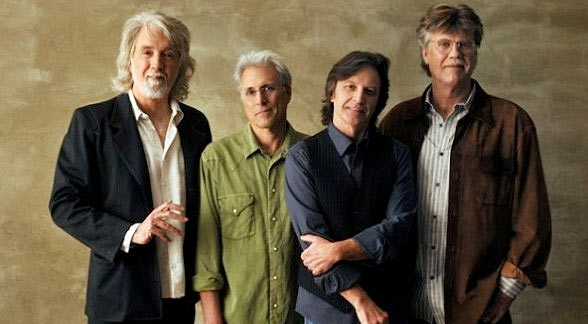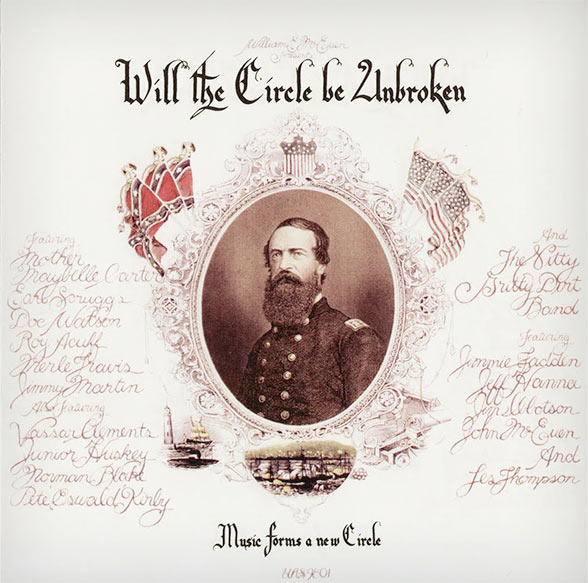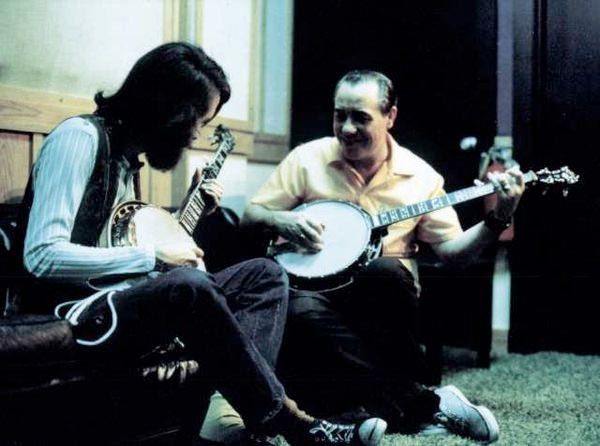Will the Circle Be Unbroken – An Analog Remastering Tale I
The last couple of posts have focused on the notion of copying analog audio using tape machines. The key thing to take away from those couple of posts is that making analog copies reduces fidelity. Recording production, until the advent of digital recording, ALWAYS required transfers or analog copying. There is only one session master and everything downstream from it suffers from generation loss. When Scot Hull or Part-Time Audiophile says things like “one-off of a one-off” in his recent post after hearing the UHA playback of an International Phonograph “master tape copy”, he’s putting some polite spin on the concept of generation loss. Nothing delivered to consumers on analog tape back in the heyday of analog tape or with today’s revamped recorders and techniques will sound as good as the original session master.
And you will never get your hands on that original session tape. You might be fortunate enough to get chance to experience playback from the production master but that rarely happens outside of a mastering facility.
I spent 13 years running my own mastering facility and during those years I worked on both new and archival projects. One of the most memorable was the remastering of the classic Nitty Gritty Dirt Band’s “Will the Circle Be Unbroken” album, which was produced by William E. McEuen (the older brother of John McEuen, the banjo player in the band) in 1972. I’ve known both of these guys for decades and have been fortunate enough to work on a number of projects with them over the years.
Figure 1 – The cover of “Will the Circle Be Unbroken” album
When it came time to remaster the WTCBU for the 30th anniversary edition version on two CDs in 2002, I was asked to do the work. The 14″ analog tape production masters were hand delivered to my studio. I remember I had to rent an ATR-100 tape machine to handle the large reels AND A DBX noise reduction unit (the production masters were encoded through a process that was popular at the time). The masters were on the big reels because a single tape had to accommodate an entire side of the original album. The original release was on three LPs!
BTW I learned this morning that the album is being “remastered” yet again for a new vinyl LP three disc pressing. This time they’re celebrating the 40th anniversary by going back to the original format. Maybe there will be a 50th anniversary edition that gives me the chance to get the original session masters. The guy at the Bernie Grundman mastering will get the same tapes that I received back in 2002. I’ll be interested to see what he does to the fidelity.
The WTCBU album was a budget production at the time of the original sessions. The project cost something like $25,000 and was therefore recorded directly to 2-channel stereo, quarter inch, analog tape in a studio in Nashville. There would be no time or budget to use multitrack techniques. And the results were all the better, in my opinion, because the playing was done live in the same studio rooms by all of the musicians (sound familiar? This is the way I record ALL of my own projects). In addition, there was a streaming recording made of all of the conversations between the musicians. One especially important audio segment captured the moment that Doc Watson and Merle Travis met for the first time (Doc Watson named his son “Merle” after the great Merle Travis).
Figure 2 – John McEuen and Earl Scruggs
The NGDB, who were referred to as “a bunch of long-haired West Coast boys” by Roy Acuff, a featured artist on the project, came to Nashville for a collaboration between themselves and some of the most influential and important traditional country artists including Acuff, Mother Maybelle Carter, Doc Watson, Earl Scruggs, Merle Travis, Pete “Oswald” Kirby, Norman Blake, Jimmy Martin and fiddler Vassar Clements.
The album was a tremendous success and sold millions of copies. It put the Nitty Gritty Dirt Band on the map and gave birth to the emergence of “pop” country as a variety of commercial artists from the west coast made their way to Nashville.
To Be Continued…




Hi Mark,
When you did the transfer for the 30th anniversary edition, what bit depth and sampling rate did you use?
Thank you!
Joe
This was a very long time ago and prior to my move to high-resolution audio. The transfers were done at CD spec.
Love all three volumes of Will the Circle Be Unbroken. All three are on my desert island list. You say that your reissue of Vol. 1 was done at CD spec but the liner notes of the CD state that “All original 30 ips masters (recorded live to two track) transferred at 24 bit resolution.” So, is there a 24 bit file of this masterpiece? And at what sampling rate?
The 30th anniversary version that I mastered was transferred at 44.1 kHz/16-bits…although I believe it was done again later.
Sorry Mark but that quote comes from the liner notes of the 30th anniversary version.
That’s weird…could I be thinking about the 20th anniversary. I did it a long time ago.
1. When comparing the sound of the analog production masters with the sound of the endproduct (the CD), is there a big difference, or does the CD sound almost as good as the tape?
2. What is a production master? Is it a copy of the original session masters?
3. Another question concerning Hi-Res Audio:
I have already purchased a lot of my favorite music as a Hi-Res download or Hi Fidelity Pure Audio Blu-
Ray DVD, because my wish is to get as close as possible to the sound of the original source (master tapes).
Everything that I have is classic Pop and Rock music (like: “Rumours” Fleetwood Mac, “Goodbye Yellow Brick Road” Elton John, “Crime Of the Century” Supertramp, “Hot August Night” Neil Diamond … etc.).
Now I discovered your articles, Mr. Waldrep, and it seems I should have stayed with my CDs since they offer almost as good a quality as the source tapes from which the music was being transferred (according to what I understood reading your articles).
Should I stay with my CDs and have I wasted my money, or what is your advice? Is that Hi-Res “thing” (transfer of old analogue tapes into Hi Resolution format) just a “hoax” and unnecessary?
I’ll address in a future post…